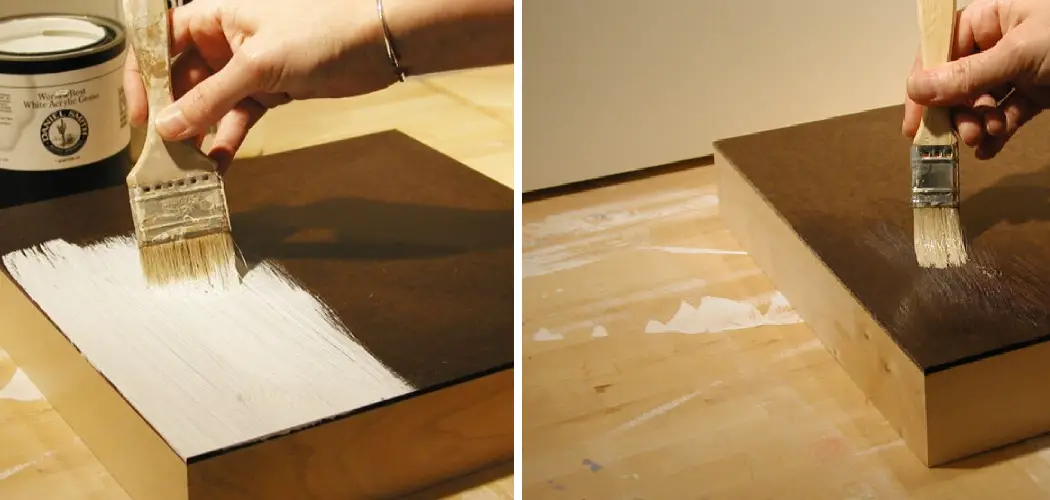Are you ready to create beautiful artwork with wood and acrylic paints? Start by learning the basics of priming wood for acrylic painting, a simple process that can make your project look professional with minimal effort. Whether you’re an experienced artist or just starting out, understanding how to prepare the surface of your wood before adding paint is essential if you want outstanding results.
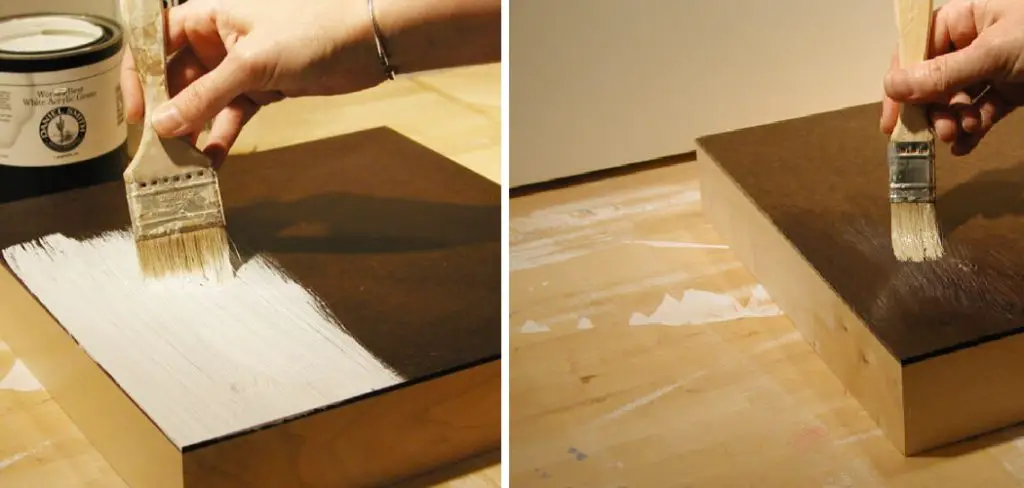
In this blog post, we’ll tell you everything you need to know about how to prime wood for acrylic painting from cleaning the surface properly through to choosing what type of primer works best for your particular piece. Get ready to take advantage of the versatility and unique properties that come with using these two mediums together!
Supplies You Will Need to Prime Wood for Acrylic Painting
- Sandpaper or sanding block
- Tack cloth
- Acrylic gesso primer
- Paintbrush or roller
- Paint palette
- Water container and rags for clean-up
Step-by-step Guidelines on How to Prime Wood for Acrylic Painting
Step 1: Preparing the Wood Surface
Before you begin priming, make sure your wood surface is clean and free from any debris or dirt. Start by sanding the surface of your wood using a fine-grit sandpaper or sanding block. This will help remove any roughness or imperfections on the surface, giving you a smooth and even canvas to work on. Preparing the wood surface properly will ensure that the primer adheres well and creates a solid foundation for your acrylic paint.
Step 2: Removing Dust
Once you have sanded the surface, use a tack cloth to remove any dust left on the wood. Wipe it carefully in one direction to avoid pushing dust into the grain of the wood. It’s essential to remove all dust particles as they can affect the adhesion of the primer. While removing dust, make sure not to touch the surface with your bare hands as the oils from your skin can also impact the adherence of the primer.
Step 3: Choosing the Right Primer
When it comes to priming wood for acrylic painting, you have a few options. You can use an acrylic gesso primer or choose a multi-purpose water-based primer. Make sure you select a type of primer that will work well with your chosen wood surface and the type of acrylic paint you plan to use.
Step 4: Applying the Primer

Now it’s time to apply the primer. Use a clean brush or roller and work in thin, even layers. If you’re using a large piece of wood, start from one corner and work your way across to avoid missing any spots. Be careful not to overwork the primer as it can cause bubbles or streaks. If you do notice any bubbles, gently run a clean brush over the surface to smooth them out.
Step 5: Drying Time
Allow the primer to dry completely before moving on to the next step. This will usually take around 1-2 hours, but always check the instructions on your chosen primer for specific drying times. Make sure you leave your wood surface in a well-ventilated area while it dries. Drying perfectly is crucial to the quality of your finish, so don’t rush this step.
Step 6: Sanding Between Layers
If you want a smoother and more even surface, consider sanding lightly between layers of primer. This will help remove any brush strokes or imperfections and give you a perfectly smooth canvas for painting. Make sure to remove any dust before applying another layer of primer.
Step 7: Adding Multiple Layers
Depending on the type of wood and the level of coverage you want, you may need to apply multiple layers of primer. Make sure to let each layer dry completely before adding another one. This will ensure that your paint adheres well and gives you a professional-looking finish. Make sure to sand lightly between each layer for the best results.
Step 8: Finishing Touch
Once you have applied your final layer of primer and it has dried completely, your wood surface is now ready for acrylic painting! You can also choose to add a topcoat or varnish to protect your artwork even further. Make sure to clean your brushes and other supplies thoroughly before starting your painting to avoid contaminating your paint.
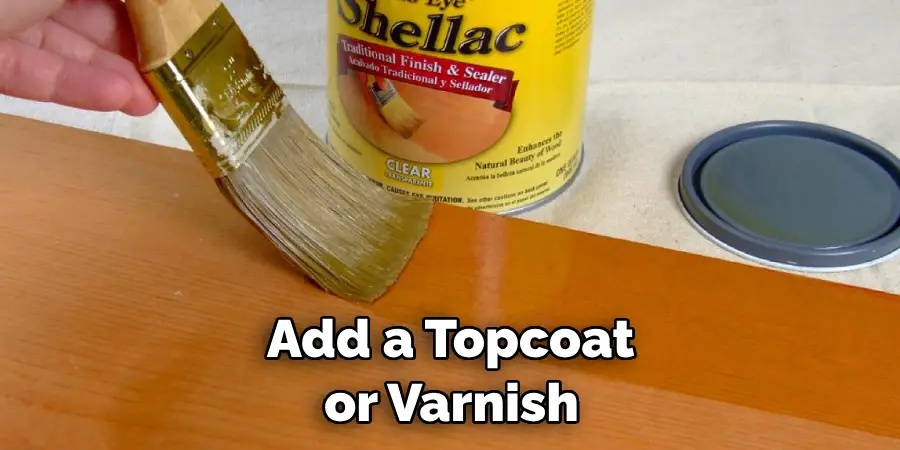
Following these simple steps will help you achieve a beautiful and professional-looking finish on your wood surface. With proper priming, your acrylic paints will adhere better and give you long-lasting results. Experiment with different types of wood and primer to find what works best for your style and projects. Happy painting!
Additional Tips and Tricks to Prime Wood for Acrylic Painting
- Make sure the wood is completely sanded and smooth before applying any primer. Any rough patches or imperfections on the surface can affect the overall finish of your painting.
- Consider using a high-quality wood sealer before priming to ensure that the wood does not absorb too much moisture from the paint.
- Use a good-quality acrylic gesso for priming, preferably one that is specifically designed for wood surfaces.
- Apply the gesso in thin, even layers using a wide brush or roller, making sure to cover the entire surface of the wood.
- Allow each layer of gesso to dry completely before applying another layer. This will ensure a smooth and even base for your painting.
- To add texture to your painting, you can mix sand or texture medium into the gesso before applying it to the wood.
- For a smoother and more uniform surface, consider using a sandpaper or sponge to lightly sand the gessoed surface once it has dried.
- Before starting your painting, test different color combinations on a small area of the primed wood to see how they will look together. This will help you avoid any unwanted surprises later on.
- Lastly, always make sure to clean your brushes and tools thoroughly after priming. Any dried gesso can be difficult to remove once it hardens.
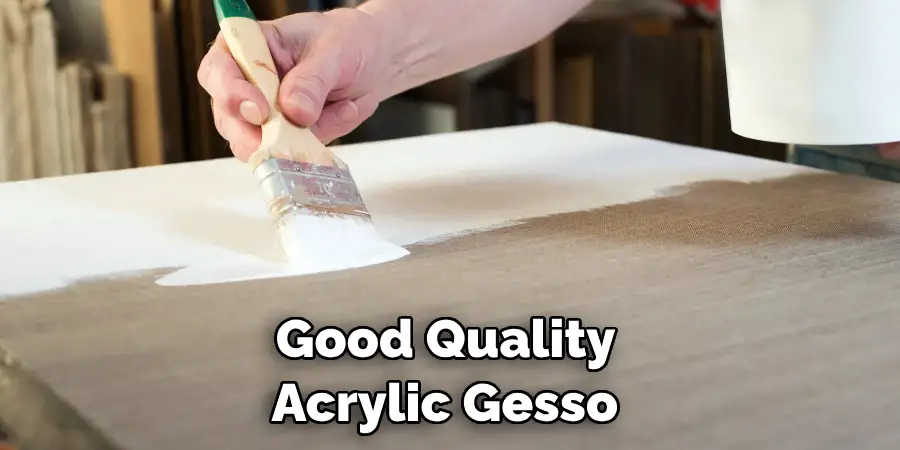
Following these tips and tricks will help you achieve a professional and long-lasting finish on your acrylic paintings on wood surfaces. Remember to always prime your wood properly before starting any painting project, as it will greatly improve the overall quality and durability of your artwork. Happy painting!
Benefits of Priming Wood for Acrylic Painting
- Provides a smooth and even surface for the paint to adhere to, resulting in better brush strokes and an overall finish.
- Prevents the wood from absorbing moisture, which can cause warping or cracking of the surface over time.
- Helps to seal any imperfections or knots on the wood, creating a uniform base for your painting.
- Extend the lifespan of your artwork by protecting it from environmental factors such as humidity and UV rays.
- Allows for better color vibrancy and intensity, as the paint is not absorbed by the wood.
- Can be easily customized by adding texture or creating a tinted base for your painting.
- Allows for easier blending of colors and layering techniques, resulting in more dynamic and visually appealing artwork.
- Provides a stable foundation for any additional mediums or techniques used in your painting, such as collage or mixed media elements.
- Enhances the overall visual appeal and professionalism of your artwork.
These are just some of the many benefits of properly priming wood for acrylic painting. So next time you’re working on a wood surface, remember to take the time to prime it and see the difference it makes in your finished piece.
Things You Should Consider to Prime Wood for Acrylic Painting
1. Type of Wood:
The type of wood you use can greatly affect the final look of your painting. Some woods are more porous than others, which means they will absorb more or less paint. It’s important to choose a wood that is suitable for acrylic painting and will give you the desired outcome. Common choices include birch plywood, pine, and poplar. Each wood has its own unique texture and grain, so keep that in mind when selecting your canvas.
2. Sanding the Wood::

Before priming, it’s important to sand the wood to create a smooth surface. This will help the primer adhere better and prevent any rough spots from showing through your paint. Start with a coarse grit sandpaper and gradually work your way up to a finer grit for a smoother finish. This will also help to remove any dirt or debris from the surface.
3. Choosing the Right Primer:
When it comes to priming wood for acrylic painting, you have a few options. You can use gesso, an acrylic primer specifically designed for porous surfaces like wood. Alternatively, you can use a clear sealer or even a white interior latex paint as your primer. Just make sure to choose a primer that is suitable for your chosen wood and will provide good adhesion.
4. Prepping the Wood:
Once you have chosen your wood and sanded it, it’s time to prep it for priming. Wipe down the surface with a clean, damp cloth to remove any dust or debris from sanding. This will ensure a clean surface for your primer to adhere to. Allow the wood to dry completely before moving on to the next step.
5. Applying Primer:
Using a paintbrush or roller, apply an even coat of primer onto your wood surface. Make sure to cover all areas evenly and avoid any drips or brush marks. Depending on the type of primer you are using, you may need to apply multiple coats for better coverage. Follow the instructions on the primer for drying times between coats.
6. Sanding Again:

Once the primer has dried completely, it’s time to sand the surface again. This will help to create an even smoother finish and remove any imperfections or brush marks from the previous coat of primer. Use a very fine grit sandpaper for this step and be gentle to avoid removing too much of the primer.
7. Toning the Wood:
If you want a more natural look to your painting, you can skip this step. However, if you want a pure white canvas, you can tone the wood with a light coat of white paint before applying your final layer of primer. This will help to create a clean white base for your painting.
Following these considerations will help you properly prime wood for acrylic painting and achieve the desired result. Remember to always let your primer fully dry before starting your masterpiece, and be sure to experiment with different types of wood to find the perfect canvas for your next painting project!
Precautions Need to Follow for Priming Wood for Acrylic Painting
- Wood is a porous material that can easily absorb moisture. This makes it vulnerable to warping and cracking when exposed to humidity changes or water-based materials such as acrylic paint. To prevent this, it is important to properly prepare the wood before priming.
- Before priming, make sure to sand the wood surface with a fine-grit sandpaper. This will remove any rough surfaces and create a smooth base for the primer to adhere to.
- Always use a high-quality wood primer that is specifically designed for acrylic paints. This will ensure better adhesion and prevent any potential issues with cracking or peeling.
- It is recommended to apply at least two coats of primer, allowing each coat to fully dry before applying the next one. This will provide a strong and stable base for the acrylic paint to adhere to.
- While priming, make sure to cover all edges and corners of the wood surface. This will prevent any potential warping or cracking in these areas.
- If you are using multiple types of wood in your painting, it is important to use the same primer for all surfaces. Different types of wood may have different levels of absorbency, and using different primers may result in an uneven painting surface.
- Avoid painting on a freshly primed surface. It is best to wait at least 24 hours before applying acrylic paint on top of the primer to ensure that it has fully cured.
- In addition to priming, it is also important to properly seal the wood surface before painting. This will further protect the wood from moisture and ensure better adhesion of the paint.
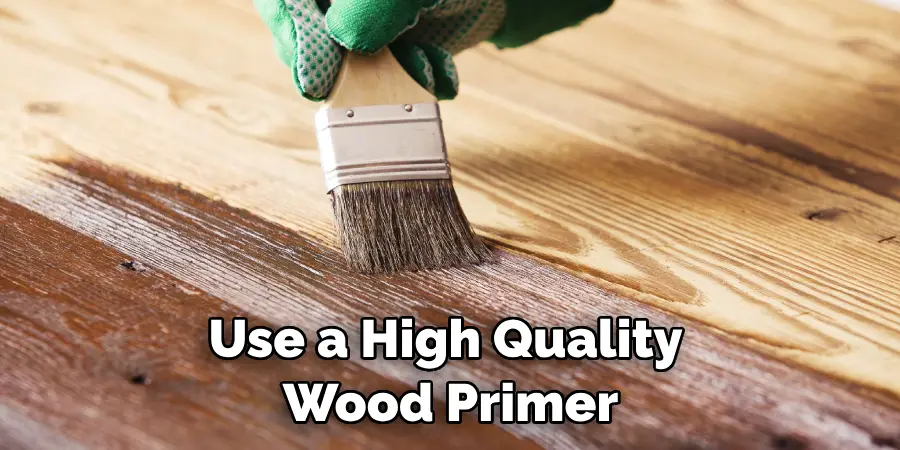
Following these precautions will not only ensure a better painting experience but also help your artwork last longer. Properly primed and sealed wood surfaces are less prone to damage or deterioration over time, making them ideal for acrylic painting projects that you want to stand the test of time. So take the time to properly prime your wood before starting your next acrylic painting project for best results!
Conclusion
With the above outline, you can easily understand how to prime wood for acrylic painting. As mentioned earlier, priming is an essential step that helps prepare the surface of the wood so it is ready for painting. It also helps to protect the wood from damage and improves the overall appearance of your painting.
One important thing to keep in mind is that there are different types of primers available, and each one has its own unique properties. It’s important to choose the right primer based on your specific needs and the type of wood you are using. Experiment with different types of primers to find the one that works best for you.

